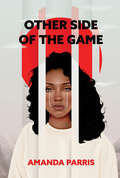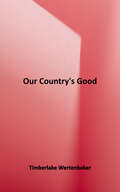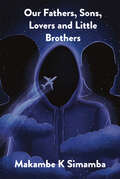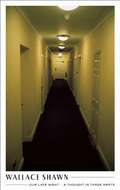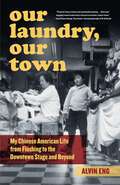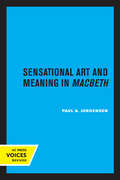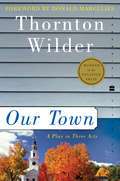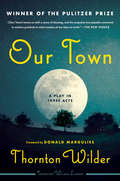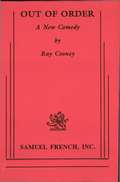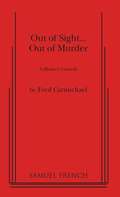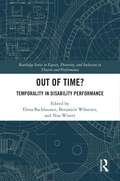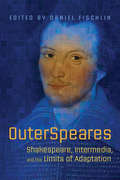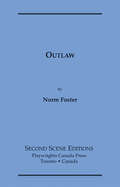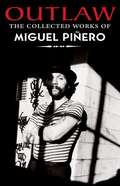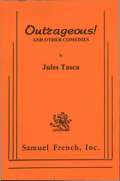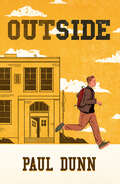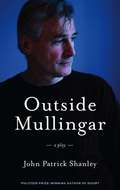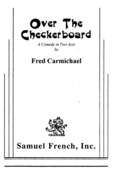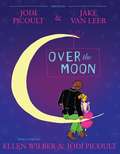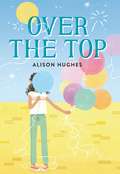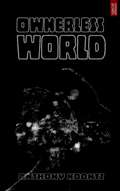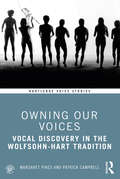- Table View
- List View
Other Side of the Game
by Amanda ParrisI don’t think you can expect society to change if you’re not ready to take the first step. In the 1970s Beverly walks into an office of Black activists, wanting to join the Movement, and has to prove she’s committed enough to fight. Some forty years later, in the Hip Hop Generation, Nicole reunites with her ex-boyfriend on a basketball court, wondering where he’s been, when a police officer stops them. In this striking debut, Amanda Parris turns the spotlight on the Black women who organize communities, support their incarcerated loved ones, and battle institutions, living each day by a ride-or-die philosophy, strengthening their voices and demanding to be heard.
Our Country's Good
by Timberlake WertenbakerAustralia 1789. A young married lieutenant is directing rehearsals of the first play ever to be staged in that country. With only two copies of the text, a cast of convicts, and one leading lady who may be about to be hanged, conditions are hardly ideal...Winner of the Laurence Olivier Play of the Year Award in 1988, and many other major awards, Our Country's Good premiered at the Royal Court Theatre, London, in 1988 and opened on Broadway in 1991. 'Rarely has the redemptive, transcendental power of theatre been argued with such eloquence and passion.' Georgina Brown, Independent Methuen Student Editions are expertly annotated texts of a wide range of plays from modern and classic repertoires. As well as the complete text of the play itself, the volume contains a chronology of the playwright's life and work; an introduction giving the background to the play; a discussion of the various interpretations; and notes on individual words and phrases in the text.
Our Fathers, Sons, Lovers and Little Brothers
by Makambe K SimambaSlimm, a seventeen-year-old Black boy in a hoodie suddenly finds himself in the first moments of his afterlife. He calls out for God. God does not respond. What happens next is a sacred journey through the unknown, as Slimm grapples with the truth of the life he lived and the death he didn’t choose. Our Fathers, Sons, Lovers and Little Brothers is a protest for all Black life beyond headlines and hashtags, a prayer for all families left behind, and a promise to the community that all Black lives matter.
Our Late Night and A Thought in Three Parts
by Wallace Shawn"[Our Late Night is] a short play, but a savage one...Neurosis, panic and sexual surreality underlie Shawn's startling vision of New Yorkers at play."--GuardianWallace Shawn's OBIE Award-winning, never before published Our Late Night premiered in New York in 1975 under direction of André Gregory, and was revived in London in 1999 under direction of Caryl Churchill. A Thought in Three Parts--currently out of print--created an uproar with its 1977 London premiere, investigated by the vice squad for its allegedly pornographic content. Wallace Shawn is a noted actor and writer. His politically charged and controversial plays include Aunt Dan and Lemon, The Designated Mourner, and The Fever.
Our Laundry, Our Town: My Chinese American Life from Flushing to the Downtown Stage and Beyond
by Alvin EngWith humor and grace, the memoir of a first-generation Chinese American in New York City.Our Laundry, Our Town is a memoir that decodes and processes the fractured urban oracle bones of Alvin Eng’s upbringing in Flushing, Queens, in the 1970s. Back then, his family was one of the few immigrant Chinese families in a far-flung neighborhood in New York City. His parents had an arranged marriage and ran a Chinese hand laundry. From behind the counter of his parents’ laundry and within the confines of a household that was rooted in a different century and culture, he sought to reconcile this insular home life with the turbulent yet inspiring street life that was all around them––from the faux martial arts of TV’s Kung Fu to the burgeoning underworld of the punk rock scene.In the 1970s, NYC, like most of the world, was in the throes of regenerating itself in the wake of major social and cultural changes resulting from the counterculture and civil rights movements. And by the 1980s, Flushing had become NYC’s second Chinatown. But Eng remained one of the neighborhood’s few Chinese citizens who did not speak fluent Chinese. Finding his way in the downtown theater and performance world of Manhattan, he discovered the under-chronicled Chinese influence on Thornton Wilder’s foundational Americana drama, Our Town. This discovery became the unlikely catalyst for a psyche-healing pilgrimage to Hong Kong and Guangzhou, China—his ancestral home in southern China—that led to writing and performing his successful autobiographical monologue, The Last Emperor of Flushing. Learning to tell his own story on stages around the world was what proudly made him whole.As cities, classrooms, cultures, and communities the world over continue to re-examine the parameters of diversity, equity, and inclusion, Our Laundry, Our Town will reverberate with a broad readership.
Our Naked Frailties: Sensational Art and Meaning in Macbeth
by Paul A. JorgensenThis title is part of UC Press's Voices Revived program, which commemorates University of California Press’s mission to seek out and cultivate the brightest minds and give them voice, reach, and impact. Drawing on a backlist dating to 1893, Voices Revived makes high-quality, peer-reviewed scholarship accessible once again using print-on-demand technology. This title was originally published in 1971.
Our Town: A Play in Three Acts (Harper Perennial Modern Thought Ser.)
by Thornton WilderOur Town was first produced and published in 1938 to wide acclaim. This Pulitzer Prize-winning drama of life in the town of Grover 's Corners, an allegorical representation of all life, has become a classic. It is Thornton Wilder's most renowned and most frequently performed play. It is now reissued in this handsome hardcover edition, featuring a new Foreword by Donald Margulies, who writes, "You are holding in your hands a great American play. Possibly the great American play. " In addition, Tappan Wilder has written an eye-opening new Afterword, which includes Thornton Wilder's unpublished notes and other illuminating photographs and documentary material.
Our Town: A Play in Three Acts (Perennial Classics Ser.)
by Thornton Wilder“[Our Town] leaves us with a sense of blessing, and the unspoken but palpable command to achieve gratitude in what remains of our days on earth.” — The New YorkerThornton Wilder’s Pulitzer Prize-winning drama of life in the mythical village of Grover’s Corners, New Hampshire—an allegorical representation of all life—is an American classic. It is the simple story of a love affair that asks timeless questions about the meaning of love, life, and death.Our Town explores the relationship between two young neighbors, George Gibbs and Emily Webb, whose childhood friendship blossoms into romance, and then culminates in marriage. When Emily loses her life during childbirth, the circle of life portrayed in each of the three acts—childhood, adulthood, and death—is fully realized.Widely considered one of the greatest American plays of all time, Our Town debuted on Broadway in 1938 and continues to be performed daily on stages around the world. This special edition includes an afterword by Wilder's nephew, Tappan Wilder, with illuminating documentary material about the playwright and his most famous drama.
Out Of Order
by Ray CooneyFarce / 6m, 4f / Interior / When Richard Willey, a government junior minister, plans to spend the evening with Jane Worthington, one of the opposition's typists, things go disastrously wrong in this hugely successful sequel to Two into One.
Out of Sight... Out of Murder
by Fred CarmichaelMystery Comedy / Characters: 4 males, 5 females Set Rewuirements: Interior. Peter Knight is grinding out a murder story in an old mansion where another author was murdered years before. A weird electrical storm effects a cosmic snafu and his characters come to life. There's the lovely ingenue, the trusty butler, a feisty character woman, a dauntless hero, a fascinating "other woman," the always pregnant serving girl, and the wily lawyer waiting for midnight to read the will. Peter looses control of his characters and there is a murder; the intended victim is Peter. Other murders follow and the culprit is among characters who, having also worked for other authors, know a great deal about the subject. Can Peter find the killer before the killer gets his author? Is romance with the ingenue leading anywhere? Where is the fortune mentioned in the will? All is solved ingeniously with romance, suspense and cosmic wit. . "Refreshing, witty parody." Sharon Patroit Leader. . "Uproariously funny." Greenwich Press Post.
Out of Time?: Temporality In Disability Performance (Routledge Series in Equity, Diversity, and Inclusion in Theatre and Performance)
by Elena BackhausenOut of Time? has many different meanings, amongst them outmoded, out of step, under time pressure, no time left, or simply delayed. In the disability context, it may also refer to resistant attitudes of living in “crip time” that contradict time as a linear process with a more or less predictable future. According to Alison Kafer, “crip time bends the clock to meet disabled bodies and minds.” What does this mean in the disability arts? What new concepts of accessibility, crip futures, and crip resistance can be staged or created by disability performance? And how does the notion of “out of time” connect crip time with pandemic time in disability performance? The collective volume seeks to respond to these questions by exploring crip time in disability performance as both a concept and a phenomenon. The book tackles the topic from two angles: on the one hand from a theoretical point of view that connects performance analysis with crip and performance theory, on the other hand from a practice-based perspective of disability artists who develop new concepts and dramaturgies of crip time based on their own lived experiences and observations in the field of the performing and disability arts. The book gathers different types of text genres, forms, and styles that mirror the diversity of their authors. Besides theoretical and academic chapters on disability performance, the book also includes essays, poems, dramatic texts, and choreographic concepts that ref lect upon the alternative knowledge in the disability arts.
OuterSpeares
by Daniel FischlinFor Shakespeare and Shakespearean adaptation, the global digital media environment is a "brave new world" of opportunity and revolution. In OuterSpeares: Shakespeare, Intermedia, and the Limits of Adaptation, noted scholars of Shakespeare and new media consider the ways in which various media affect how we understand Shakespeare and his works.Daniel Fischlin and his collaborators explore a wide selection of adaptations that occupy the space between and across traditional genres - what artist Dick Higgins calls "intermedia" - ranging from adaptations that use social networking, cloud computing, and mobile devices to the many handicrafts branded and sold in connection with the Bard.With essays on YouTube and iTunes, as well as radio, television, and film, OuterSpeares is the first book to examine the full spectrum of past and present adaptations, and one that offers a unique perspective on the transcultural and transdisciplinary aspects of Shakespeare in the contemporary world.
Outlaw
by Norm FosterA young Canadian homesteader travelling far from home finds himself accused of murder in the state of Kansas in 1871. With only his wits to defend himself, he turns the law of the land—and the men hell-bent on enforcing it—upside down. This authentic western is a unique take on the days when guns were the law.
Outlaw: The Collected Works of Miguel Piñero
by Miguel PiñeroPart observer, part participant in the turbulent goings-on in his Nuyorican barrio, Miguel Piñero blasted onto the literary scene and made waves in the artistic current with his dramatic interpretations of the world around him through experimental poetry, prose, and plays. Portrayed by actor Benjamin Bratt in the 2001 feature film Piñero, the poet's works are as rough and gritty as the New York City underworld he wrote about and loved. His depictions of pimp bars, drug addiction, petty crime, prison culture and outlaw life are all drawn from first-hand experience. This long-awaited collection includes previously published and never-before-published poems; ten plays, including Short Eyes, which was later made into a film and won the 1973-1974 New York Drama Critics' Circle Award for Best American Play, The Sun Always Shines for the Cool, and Eulogy for a Small Time Thief. A co-founder of the Nuyorican Poet's Café, Piñero died at the age of 41, leaving behind a compelling legacy of poetry and plays that reveal the harsh, impoverished lives of his urban Puerto Rican community.
Outrageous & Other Comedies
by Jules TascaHarry panics when a black family moves in next door. He and some friends engage in every provocation to force them to move. When he enlists some unsavory characters to burn down their house, they torch the wrong place Harry's. The arsonists are caught and Harry is implicated. He ends up in prison with a black cellmate.
Outside
by Paul DunnDaniel’s ready to talk. And his friends Krystina and Jeremy are ready to help. But is it too late? Set in separate but simultaneous lunch periods at two different high schools, the teenagers are faced with acknowledging what drove them apart. At his new school, Daniel speaks to the Gay-Straight Alliance about the bullying and depression that forced him to move. He looks back fondly at the bond he formed with Krystina and Jeremy in history class and the trauma he faced from anonymous text messages. At his former school, Krystina and Jeremy are setting up for their first GSA meeting while grappling with the guilt of not doing more to help their friend. For the first time Daniel has an appreciative audience, but his friends face an empty room. The narratives intertwine as Daniel gains more confidence in his queer identity and Krystina and Jeremy try to assess their boundaries as straight people who want to create a safe space. By talking about mistakes, abuse, a suicide attempt and a move, the teens find comfort in perspective and power in numbers.
Outside Mullingar
by John Patrick Shanley"In the work of John Patrick Shanley, the truth is as charming as it is painful, reality as touched with magic as it is factual, and existence as absolute as it is illusory."--BOMB magazineFor Anthony and Rosemary, introverted misfits straddling forty, love seems unlikely. In this very Irish story with a surprising depth of poetic passion, these yearning, eccentric souls fight their way towards solid ground and happiness. Their journey is heartbreaking, funny as hell, and ultimately, deeply moving. Set in the Irish countryside, Outside Mullingar has been dubbed the "Irish Moonstruck" and will premiere on Broadway in 2014, starring Debra Messing and Brian F. O'Byrne and helmed by Doug Hughes, the Tony Award-winning director of Doubt.John Patrick Shanley is from the Bronx. His plays include Danny and the Deep Blue Sea, Savage in Limbo, and Dirty Story. His trilogy Church and State began with Doubt, followed by Defiance and Storefront Church. For his play Doubt, the playwright received both the Tony Award and the Pulitzer Prize. He has nine films to his credit, including the five-time Oscar-nominated Doubt with Meryl Streep, Philip Seymour Hoffman, Amy Adams, and Viola Davis. Other films include Five Corners, Alive, Joe Versus The Volcano, and Live From Baghdad for HBO (Emmy nomination). For Moonstruck, he received both the Writers Guild Award and the Academy Award for Best Original Screenplay. The Writers Guild of America awarded Shanley the 2009 Lifetime Achievement Award in Writing.
Outside Play (Hodder Cambridge Primary English Ser.)
by Ruth PriceExplore, support and consolidate communication and language and literacy skills with a colourful non-fiction book for ages 4-5, containing key concepts and practice opportunities. Practise key communication, language and literacy skills and concepts with simple question prompts on each page and activities at the end of the book. Support the themes covered in Activity Book A and the Teacher’s Pack. Outside Play What can we play outside today? Books in the Hodder Cambridge Primary English series for the Foundation Stage: Activity Book A – 9781510457249 Activity Book B – 9781510457256 Activity Book C – 9781510457263 Reading Book A FICTION No Nap for Grandad – 9781510457270 Reading Book B FICTION The Floating Market – 9781510457294 Reading Book C FICTION How Zebra got his Coat – 9781510457300 Reading Book A NON-FICTION Outside Play – 9781510457287 Reading Book B NON-FICTION Ring-a-Ting-Ding! – 9781510457331 Reading Book C NON-FICTION Let’s Pretend – 9781510457348 Teacher’s Pack – 9781510457379 HODDER EDUCATION e: education@bookpoint.co.uk w: hoddereducation.com
Over Here!
by Richard M. Sherman10 m, 8 f plus orchestra \ Various sets. \ From the composers of Mary Poppins, Over Here! is a choo-choo ride into the past-to wartime America of the 1940s-and it brought the two surviving Andrews Sisters to Broadway and renewed acclaim. An affectionate lampoon of the brassy big band era of World War II America, the original cast in support of the fabled Andrews Sisters included John Travolta, Marilu Henner, Ann Reinking and Treat Williams. On a train full of draftees heading for Europe, the 'DePaul' sisters are looking for a third singer to transform their duo into a trio. They find her in Mitzi-a down-home girl with a secret: she's a Nazi spy with a slinky Dietrich accent and a microphone conveniently hidden in her lipstick. Seventeen rollicking Big Band numbers evoke the originals of the period while gently spoofing musical memories of the wartime era. \ "Engaging and devilishly clever."-Clive Barnes
Over The Checkerboard
by Fred CarmichaelComedy / 4m, 4f / Interior / Villagers in a picturesque Vermont town hope an unusual bequest will give them the financial means to fight off a developer who plans to build a shopping mall that will destroy the character of their town. A novelist who once lived there has died leaving the village an unpublished work entitled Over the Checkboard which promises to be his best novel since his only successful work won a Pulitzer thirty five years ago. Controversy erupts when the book turns out to be a steamy look at a small town not unlike theirs with characters startlingly similar to their neighbors, friends and selves.
Over the Moon
by Jodi Picoult Jake Van Leer Ellen WilberMaster storyteller and bestselling author Jodi Picoult teams up with Jake van Leer and Ellen Wilber to bring you an original musical, sure to breathe life into any middle-school and high school drama curriculum. Part Shakespearean comedy and part Fractured Fairy Tales, Over the Moon is all fun. Narrated by a cross-dressing Hairy Godmother (no, that's not a typo), the story begins when Luna (the moon) descends to a small town on earth disguised as a boy, and sets out to help humans find love. But Luna herself falls in love with Prince Jack... who's in love with Felicity... who has fallen for Luna. On the way to happily ever after are a steady stream of clever puns and topical jokes about American Idol, universal health care, Bernie Madoff, and just about every fairy tale creature you've ever heard of! With nineteen original hum-worthy songs and plenty of spots to tailor the play to any city or town, Over the Moon is the perfect choice for every school looking to perform an energetic show that's fresh, funny, and timeless.
Over the Top
by Alison HughesFrom an award-winning author Alison Hughes comes a new funny, honest middle grade novel following Diva Cleopatra as she tries to adapt to her new home and school while coming face-to-face with the school's mean girls. When eleven-year-old Diva Pankowski's family moves, she is horrified (but not surprised) that her mother's new dream home is a bright pink, castle-themed house. She's used to her Mom's excesses; after all, she's lived her whole life with the name "Diva Cleopatra," and her nine-year-old brother deals with "Hero Augustus." But the pink palace is only the beginning of a series of new humiliations. While acting as a glitzy mermaid-mascot for her Mom's party planning business, Diva is spotted by the class mean girls. Then, when she works up the courage to audition for her new school's production of The Wizard of Oz, she's cast in the baffling role of The Yellow Brick Road. But it's DIVAPALOOZA!, the splashy, mammoth-sized, surprise, birthday party her family throws for her (inviting everyone in sixth grade) where things really lurch toward disaster. How on earth can Diva stay true to her quiet, introverted, under-the-radar self in an in-your-face, over-the-top world?
Over-Scheduled Andrew
by Ashley SpiresDebate. French film club. Bagpipes. Can Andrew do it all? From the award-winning creator of The Most Magnificent Thing comes a book about an charming chickadee who learns – with the help of a &“deer&” friend - that busy isn&’t always better.Andrew loves putting on plays so he decides to join the drama club at school. Determined to make his performance the best it can be, he joins the debate club to practice his public speaking. He signs up for dance and karate to help with his coordination. Then he's asked to play for the tennis team and edit the school newspaper. Before long he's learning to play the bagpipes, attending Spanish classes and joining the French film club. Suddenly Andrew doesn't have time for anything or anyone else, not even his best friend Edie. And he definitely doesn't have time to sleep. Will Andrew figure out how to balance all his favorite activities and his best friend at the same time? A hilarious look at over-scheduling, a common issue many kids today face.
Ownerless World
by Anthony KoontzThis is a book about power, politics, sex, religion and science. It presents a future world where the economy is declining and various corporations are fighting each other for global power. Meanwhile, a revolutionary new technology is being born: an artificial deity willing to help people defeat those who are controlling capital and the planet. It’s everything conspiracy theories never talk about. If God doesn’t exist, you must create Him.
Owning Our Voices: Vocal Discovery in the Wolfsohn-Hart Tradition (Routledge Voice Studies)
by Patrick Campbell Margaret PikesOwning Our Voices offers a unique, first-hand account of working within the Wolfsohn-Hart tradition of extended voice work by Margaret Pikes, an acclaimed voice teacher and founder member of the Roy Hart Theatre. This dynamic publication fuses Pikes’ personal account of her own vocal journey as a woman within this, at times, male-dominated tradition, alongside an overview of her particular pedagogical approach to voice work, and is accompanied by digital footage of Pikes at work in the studio with artist-collaborators and written descriptions of scenarios for teaching. For the first time, Margaret Pikes’ uniquely holistic approach to developing the expressive voice through sounding, speech, song and movement has been documented in text and on film, offering readers an introduction to both the philosophy and the practice of Wolfsohn-Hart voice work. Owning Our Voices is a vital book for scholars and students of voice studies and practitioners of vocal performance: it represents a synthesis of a life’s work exploring the expressive potential of the human voice, illuminating an important lineage of vocal training, which remains influential to this day.
